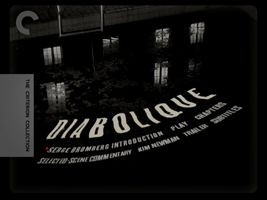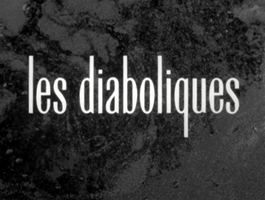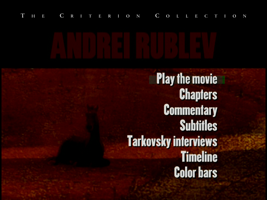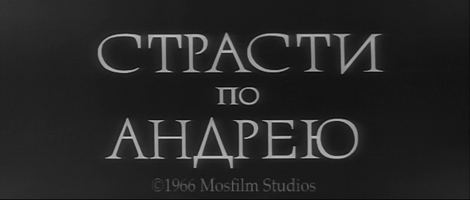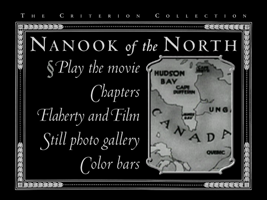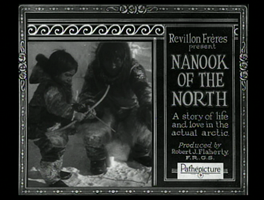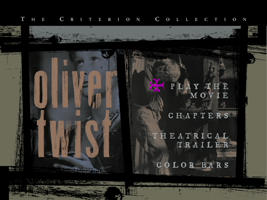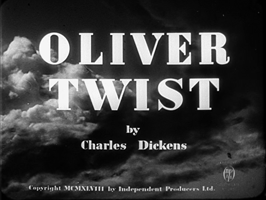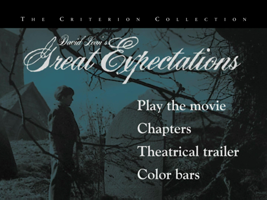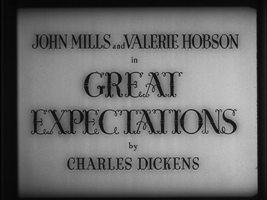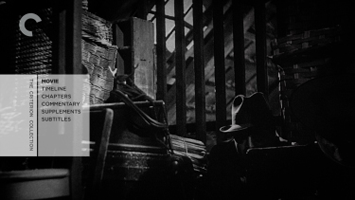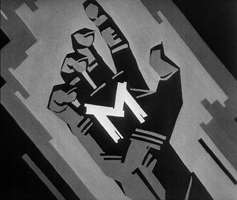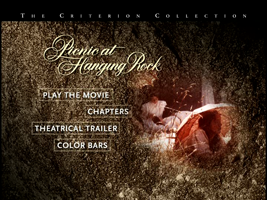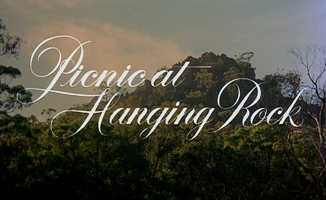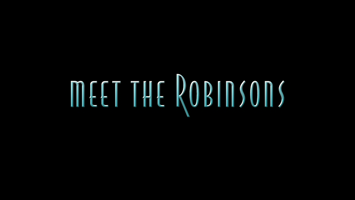
ADAM That one felt like it was for littler kids than any we’ve seen so far.
BETH That’s interesting.
ADAM I’ve said before that when I was twelve, I really loved the fast-talking vaudevillian patter of Tiny Toons, and this had that same sort of fast quipping… I don’t know if you’ve seen a Disney Channel show recently, but they all have the same style of twelve-year-old boys talking in this wry, meta way. The Disney Channel is for pre-teens now. I don’t know when that happened.
BETH But you started out by saying that it was for littler kids than any we’ve seen.
ADAM Well, what I mean is, I feel like as kids get more advanced in general, littler kids are aspiring to this grown-up style patter. Which ultimately is a tell that the movie is for little kids. Does that make sense?
BROOM You’re saying that our concept of childhood sophistication has generally risen, so that the level of sophistication seen here now corresponds to a younger age level.
ADAM I guess so. But maybe that means that the whole idea of a Disney movie for all ages of children is totally defunct. Maybe I should revise and extend: it’s obviously not for five-year-olds, but…
BROOM Why isn’t it?
BETH I think it is.
ADAM Well, Eddie wouldn’t get any of the fast talking.
BROOM What “fast talking” are you talking about? There was certainly fast stuff, but it was fast, like, peanut-butter machines and dinosaurs.
ADAM “Fast talking” isn’t right. When the dinosaur says “I have a big head and tiny arms. This plan wasn’t thought through very well.” That’s the sort of thing that as a ten-year-old I would just fallen out of my chair at.
BROOM Well, there are some layers there. Because that joke is a very modern, post-Friends kind of joke, but it’s being delivered in the same slot as a typical Looney Tunes “grown-up joke.”
ADAM But the joke isn’t actually funny enough for a grown-up to find funny. In Shrek, or in Dumbo for that matter, in many of these there have been jokes for grown-ups. These were jokes that were pretending to be jokes for grown-ups but were actually for little kids.
BETH I think what’s going on there is that the animators have a less sophisticated sense of humor, and are making themselves laugh with jokes that are less grown up.
BROOM That’s what I mean by post-Friends. In Looney Tunes, the cartoon was for kids but it also had references to stuff from adult culture. That’s why you loved Tiny Toons, because it made you feel grown up when things were presented as grown-up jokes. And I think today, actual grown-up jokes are dumber. Grown-up humor has degraded; it has a very strong infantile strain.
BETH I totally think that’s what’s happened.
BROOM The dinosaur joke is a perfect example, because first of all it was a callback to the frog saying the same thing.
ADAM I got that!
BROOM And the joke is a now-standard one, where casual tone punctures genre tone.
ADAM Breaking the fourth wall of the genre, yeah.
BROOM So that’s become a thing these days. It counts as a grown-up joke.
ADAM The jokes in Emperor’s New Groove are actually for grown-ups. They’re jokes that little kids wouldn’t get. Whereas this is not actually for grown-ups.
BROOM That very same joke is in The Emperor’s New Groove. Toward the end, when they drop a bunch of potions of different animals and the guards turn into an octopus and a cow and an ostrich and whatever. And she shouts “get after them!” and the cow raises his hand and says “excuse me, I’ve been turned into a cow, may I go home?” And she says “Yes, you may go. Anyone else?” and the rest of them say “No, we’re good.” It’s exactly the same beat. Why are you sighing? Are you sighing that I remembered that?
ADAM Partly.
BROOM What’s the other part?
ADAM I’m grappling with my feelings here. Because this really is the prevailing mode on the Disney Channel today. Knowingness that is totally wholesome.
BROOM What was “knowing” about this movie?
ADAM I mean meta-ness.
BETH Like the Frank Sinatra frogs.
ADAM Or the fact that the Snidely Whiplash character is stupid and has to puzzle out really obvious things.
BROOM That’s not “knowing,” that’s just silly comedy.
ADAM “Knowing” isn’t the right word; but it’s meta-, it’s referential. It’s not just slipping on a banana peel.
BROOM Well, the humor on Sesame Street in 1980 was in exactly the same spirit. “Kermit the Frog here, reporting from Little Miss Muffet’s tuffet,” or whatever, and Little Miss Muffet is modern or casual. I mean, it goes back to Tex Avery’s Red Hot Riding Hood, where the wolf goes to a club and Little Red does a sexy number. Your idea that anything that winks is contemporary and Disney Channel just isn’t true. This seemed to me to be pitched very much at the Sesame Street level.
ADAM But that’s what I mean when I say it’s for little kids. It’s not actually contemporary. That’s what I mean by the wholesomeness. It’s been scrubbed of all actual subversiveness and it’s just silly, fast…
BROOM You’re using the word “scrubbed” like it’s some kind of antiseptic modern-day offense. But I felt like this came by its innocence from the right angle. I found it sympathetic.
BETH I guess you’re saying that movies like The Emperor’s New Groove were a little more…
ADAM Hostile.
BROOM Well, David Spade saying “No touchy! No touchy!” is tonally different. Because it comes from a more uptight aspect of adulthood. I don’t just mean because saying “No touchy” is itself uptight, I mean the spirit of referring to anxieties in this dismissive way. The other aspect of Friends is the all the snark and the snark on snark. “Could these adults be any snarkier to each other?” Whereas here the adult references were just to benign stuff.
ADAM Yeah, there was no snark here at all.
BROOM And I totally am for it. I found this movie very sympathetic. When you say this movie is for five-year-olds…
ADAM I said ten-year-olds.
BROOM Well, then we also said five-year-olds. And I think they successfully made a movie for a range of ages, that five- to twelve-year-olds could all enjoy.
BETH Five to ten.
BROOM Well, I enjoyed it.
BETH I enjoyed it too, but I think once you get to be eleven or twelve, you’re aware of what’s cool, and this wouldn’t be cool enough.
BROOM But you know, that’s exactly why I’m for it…
BETH I’m able to be angry about it too, but that’s the way kids are…
BROOM Not just to be angry and political about it, but in defense of my own interests as a kid. I know we were growing up in a different time and maybe my interests would be different if I were growing up now. But they wouldn’t necessarily. When we went to see a screening of old Sesame Street bits at BAM, the guy from the Children’s Television Workshop who was introducing them said “most of these aren’t in rotation anymore because as kids have changed over the years, Sesame Street has changed along with them.” And I thought “That’s so stupid! Kids haven’t changed!” That’s exactly it. Kids don’t change, just our ideas about them change. Four-year-olds are four years old, so the amount of culture they’ve taken in is limited.
BETH Well, technology has such a big influence. They’re being exposed to so many things. Yes, kids fundamentally don’t change, but what culture is doing to them changes them.
ADAM Yeah. Fifteen-year-old girls used to play with dolls.
BROOM I think they still would now if they had not been shamed out of it. And I’m sure that some, who are not as deeply affected by a world of shaming, still do. And we don’t tend to talk about that because the media, “the culture,” is full of people who’ve been shamed out of things. It becomes self-fulfilling. But I think innocence persists into teenage years, even now. Maybe in smaller numbers, maybe more quietly. But I certainly don’t think innocence is a calculation that can no longer afford to be made.
ADAM Beth, you’ve got a potential home-schooler on your hands here.
BROOM No, I’m saying the opposite. I’m not saying we need to hide from the evil culture; I’m saying you can hold out whatever you want to hold out. I just reject this idea that “well, this movie didn’t work because it wasn’t knowing enough for kids these days.” That can still be fine for some kids these days, if it’s done in the right spirit. I mean, I had some issues with the execution, and some story choices, some longeurs…
ADAM I didn’t mean for this to dominate the conversation. What were your issues?
BROOM Well, my experience wasn’t really determined by the things I took issue with. I basically found it appealing. Because I felt that its innocent attitude was real. It’s easy to take that for granted and say, “well, of course this kind of positive playful attitude exists,” but it’s a thing that doesn’t show up in mass culture so much any more. So I’m happy that they made a movie that was like a children’s book, a book basically about play. And then the obligatory moral and feeling they added into that sat pretty well with it.
BETH I agree.
BROOM The lessons, that you’re always free to take responsibility for yourself…
BETH And that it’s okay to fail.
BROOM And that no matter how zany your worldview is, you can have a happy home that matches it. That all seemed good to me.
BETH Yeah, I thought it had a great message.
ADAM I agree with that part.
BROOM I was very moved by the moment when the bad guy no longer knew what to do with himself. I thought the movie as a whole was sweet and fun. It reminded me of A Town Called Panic, which was sort of the European equivalent of this same spirit of play. All the kooky craziness really did seem like a kid’s kooky craziness, and I appreciated being brought there.
ADAM Didn’t you think the sequence that actually came from the book was the weakest? The actual introduction to the zany family, the meeting of the Robinsons? You guys didn’t like that! We were all rolling our eyes at that.
BROOM I wasn’t rolling my eyes!
BETH I was a little bit rolling my eyes.
BROOM I wasn’t. I was surprised at that point, to discover the territory we were heading into. The spirit of that place wasn’t what we expect in these movies, and that whole sequence to me was like the discovery that I was in the company people who were going to say “kooky crazy stuff is fun!” I felt like the sequence was them saying, “yes, we really mean this! We are doing this very intentionally!” Up until that point their intentions weren’t quite clear.
ADAM It had a Pee-Wee’s Playhouse quality to it.
BROOM Yeah, very much.
ADAM But Pee-Wee’s Playhouse creeped me out as a child. I always thought that felt like an unsafe place to be.
BROOM That show had a subversive stratum to it. And this didn’t.
ADAM This wasn’t particularly attractive to look at. There were large stretches of CGI background where they didn’t bother to put stuff. Every time they were in a background that wasn’t a building, it was like, “well, it’s either grass or sky.”
BROOM I thought that had a deliberate children’s book purity. It seemed relevant to the cheery outlook.
BETH I didn’t mind how it looked. I thought they were using color interestingly. They desaturated it sometimes. In that first scene, and the Kung Fu fight scene.
ADAM You guys really liked it? I don’t know.
BROOM You don’t have to like it.
BETH I don’t have a problem with it.
ADAM Did you see the twist coming? Spoiler alert!
BROOM I saw both twists coming.
ADAM I never bother to think ahead, but there are only so many characters in the movie. Once it became clear that it was a movie about time travel, how many choices do you have?
BROOM Right.
ADAM So… I don’t have a lot else to say. I guess science is cool. That’s good.
BROOM It wasn’t about actual science. It was about the idea of being a brilliant inventor.
BETH I don’t like the use of pop songs in these movies.
BROOM That was one of the things that I considered a problem with execution. Rufus Wainwright really didn’t work.
BETH He had no place here.
BROOM And that came really early on, and it really seemed like the movie was going to fail.
BETH It’s interesting that the Broadway-style songs, even though they’re equally cheesy, somehow aren’t as jarring.
BROOM I’m not sure a Beauty and the Beast-style song would have just fallen into place here, but it would probably have worked better. Because those songs are open; they actually say what’s going on. Like I said about Brother Bear, it’s weird when a song over a montage “just happens to be” a relevant pop song. And this one really was just a pop song, it was definitely not about building a mind-reading device in an orphanage. And with Rufus Wainwright, everything is so utterly about him. It doesn’t feel like he could possibly be singing or thinking about anything other than himself. It certainly didn’t feel like he was singing about Jimmy Neutron. (I know Jimmy Neutron is an entirely different property, but come on.)
ADAM This was executive produced by John Lasseter, as I learned in the credits. So does this really feel like they brought Disney studios back? Or does this feel like some sort of orphan cousin to the Pixar movies?
BROOM Well, it didn’t feel like the descendant of Chicken Little. Yeah, a little bit like a Pixar loan-out. But it had its own look and feel. It didn’t feel like it took place in the world of any other movie, quite. It reminded me, like I said, of children’s books, and I thought that even before I remembered that it was based on a William Joyce book. It had a certain feel, even though at first I really didn’t care about the plot. By the end I did.
ADAM Yeah, it got better toward the end.
BROOM Also, being sleep-deprived as I am, I’m emotionally more open. I felt ready to let there be emotions in this, and found that there were some. I thought it was interesting that they set up this ultimate prize of meeting his mother in the past, and then the message at the end is that the past is really not the point. I found much of it emotionally real.
ADAM I thought the evil bowler hat was funny.
BROOM I thought the bad guy was very funny. I liked the way he moved. There was a lot of animation flair, without seeming like nerdy animation stuff, as it often does.
ADAM Yeah. I don’t know, when he got to the house and there were identical twin uncles living in the planters, I felt like, “I can’t deal with this.”
BROOM I liked that!
BETH I liked it too!
BROOM I thought it was particularly funny when they come back later and instead of hearing the other doorbell you hear the same one again. You didn’t like those guys? That was one of my favorite bits!
ADAM They were worse than the Canadian moose in Brother Bear.
BETH I really disagree with that!
BROOM Obviously they weren’t! It seems strange to me that you put these things all in the same pot, because it seemed clear to me that this was a different pot. And you could say “well, I don’t like that pot either,” but it’s not the same pot!
ADAM As Brother Bear?
BROOM Or as the Disney teen shows that were the first thing you brought up. I understand that both things could be described as “strangely clean,” but this seemed to be explicitly offering “strangely clean” as the world of imagination. The Disney channel is strangely clean while purporting to be “Life as a kid! Which happens to be perfect!”
ADAM You really think Hannah Montana is supposed to be “life”? It’s just as overtly fantastical.
BROOM Oh, come on, she doesn’t teach frogs to sing!
ADAM But she’s a pop star!
BROOM But that’s a craven, worldly fantasy. This was like playing with Legos. That’s all about, like, being sexy, whether or not they acknowledge it. That’s a princess fantasy. This wasn’t a princess fantasy at all; it was the classic Harry Potter fantasy: “Where do I belong?” “You belong in a wonderful place!” And how is that wonderful place defined? Totally whimsical terms that have nothing to do with worldly achievements. It was about familial love and, like, toys.
BETH Okay, let’s read the review.
[we begin looking it up]
BROOM I was so worried that was going to suck, and it didn’t, and now I feel like we’re home free.
BETH I do too. I’m excited.
BROOM So it turns out the three we picked for our day of shitty ones were the right ones. This was much better than Brother Bear.
ADAM Chicken Little is clearly the nadir.
BROOM The absolute worst.
BETH One of the worst movies I’ve ever seen.
ADAM This was obviously head and shoulders better than Chicken Little. No question.
[we read the very negative review]
BROOM I often enjoy A.O. Scott’s mean reviews, and I enjoyed that even as I thought he got it totally wrong. The key to his getting it wrong is when he says that the future “is badly scaled.” No! It was very much intentional that things would be grand and fantastical. It takes place in imagination space, in the mind; vast expanses are part of that!
ADAM I think he’s referring to the large swaths of empty grass and sky that I mentioned.
BROOM That’s exactly what I’m talking about! Large swaths of empty grass and sky is a classic image of the idyll of the imagination.
BETH Yeah. That’s what my Lego creations would look like. Big expanses of grass with almost nothing on them. Those are the lands that I made up for myself as a child. I understand.
BROOM And when you see it, does it not evoke something for you?
BETH Yes.
BROOM For me it ties into very basic kinds of fantasy sense-of-space things. If he can’t understand that, of course he doesn’t get it, because the whole movie was on that level.
BETH Adam agrees with A.O.
ADAM No, I don’t. I thought it was head and shoulders above Chicken Little, but that’s because I thought Chicken Little was contemptible. This had its heart in the right place and was intermittently amusing. And there was a consistency of character here.
BROOM Let me just note that the plot of this movie was the same as Back to the Future Part II.
BETH You were supposed to know that. It was clear.
BROOM Did you think that’s why there was that scene of the frogs locking the hat in the trunk? It’s a reference to Back to the Future because the whole movie has been Back to the Future?
BETH Yeah.
ADAM Do you ascribe any validity to A.O.’s complaint that everything here is utterly derivative?
BROOM I feel like again it’s a misunderstanding of why it’s all here. Yes, it’s derivative, because that’s a part of playtime.
BETH And not only that, it’s a part of contemporary comedy.
BROOM But, again, I didn’t see it that way — I had the same experience with Shrek, where some people were saying it was just typical rehashed nerdified comedy, but I just didn’t see it. In Shrek 2 I saw it.
BETH Well, I felt like the Tom Selleck joke here was an example of that.
BROOM I accepted that because it seemed like the only one of its kind. It came as a complete surprise and so it had some power. Whereas in Chicken Little they were making that joke every second. And then, after all, it really was Tom Selleck!
ADAM I will say that I was pleased that there was no wiseacre sidekick. Nobody had to listen to Wanda Sykes. I just made up that casting, but it’s a good idea, isn’t it! There were no fart jokes at all. Thank you. This is what I mean about it being for little kids.
BROOM But you can’t have your farts and eat them too! It had no fart jokes in it, which is what you want, so…
ADAM Little little kids aren’t interested in fart jokes. Disgusting fourteen-year-old boys like fart jokes.
BETH I think around the age of seven or eight you start liking fart jokes.
BROOM Your analysis of it is essentially removed from any standard. You don’t think it’s good for fourteen-year-olds to be served fart jokes, but you’re also saying, “well, it didn’t have fart jokes so it’s no good for fourteen-year-olds.”
ADAM No no, I’m pleased that it didn’t have any fart jokes.
BROOM But then you say that’s why it’s “for little kids”!
ADAM I don’t like fourteen-year-olds either! I’m not being critical when I say it’s for little kids.
BETH But do fourteen-year-olds ever watch Disney movies? I certainly didn’t.
ADAM We did.
BETH Okay. I’m sorry.
BROOM That’s why you hadn’t seen any of these great films before.
ADAM How old were we when The Lion King came out? Fifteen.
BROOM I think the last one I saw unreservedly in the theater was Aladdin.
BETH Mine was Little Mermaid.
ADAM Mine was Wreck-It Ralph.

